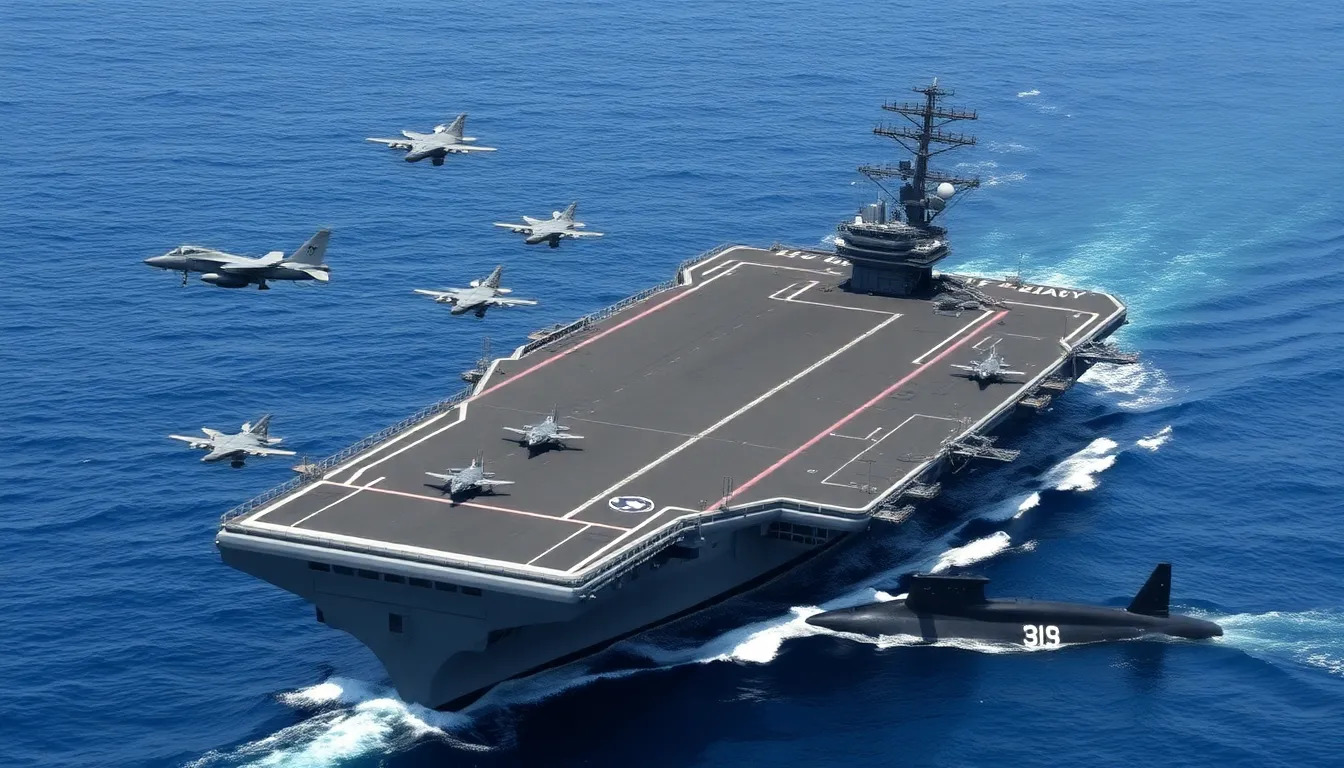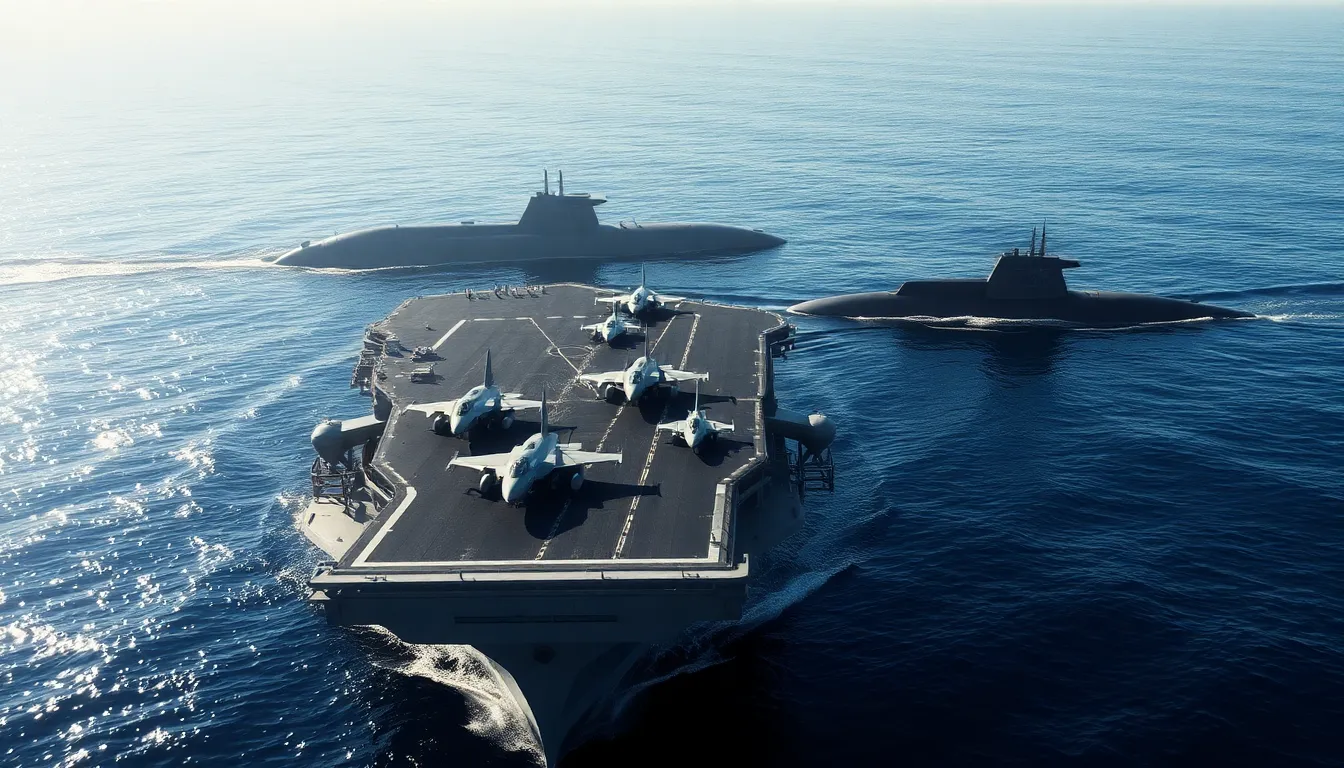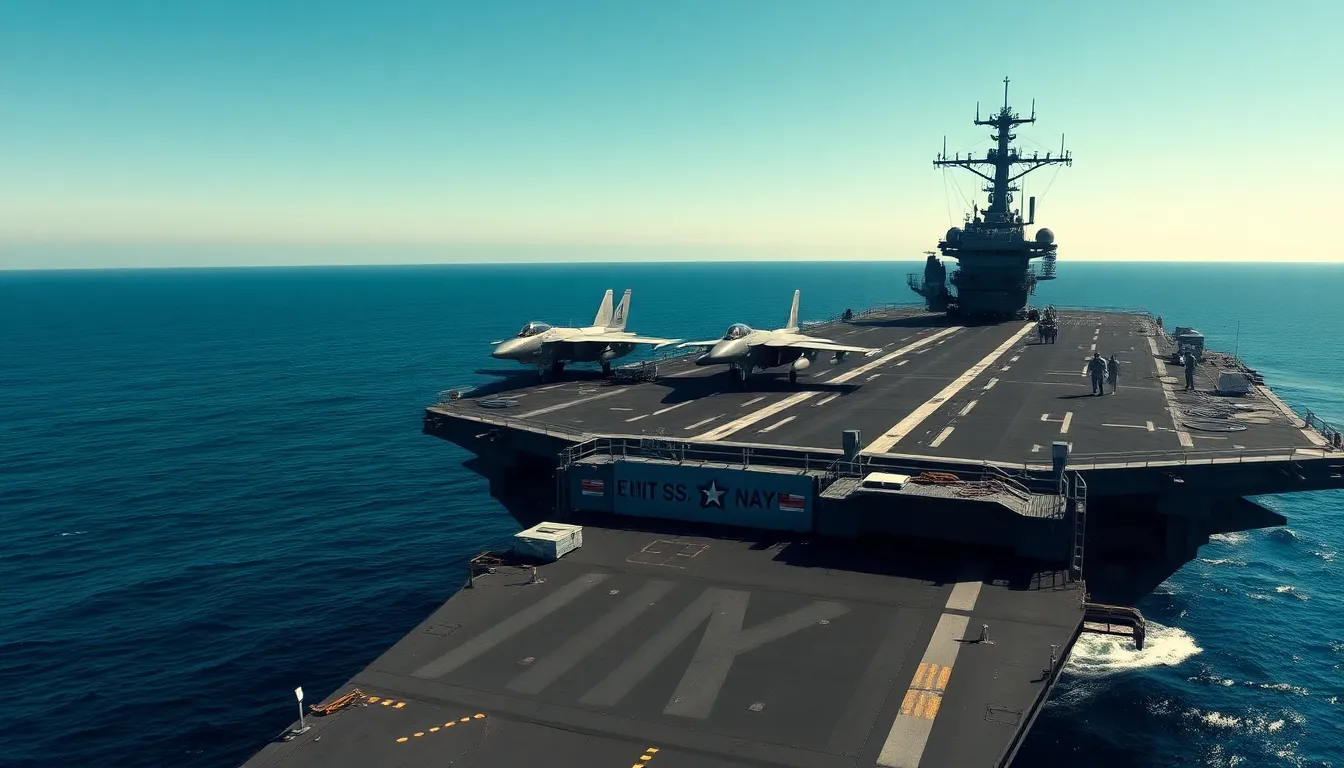In an age where global dynamics shift faster than a toddler’s mood, power projection systems have emerged as the unsung heroes of military strategy. These technological marvels not only showcase a nation’s might but also serve as a reminder that sometimes, it’s not just about having the biggest stick—it’s about knowing how to wave it around effectively.
Imagine a chess game where the pieces can move across continents in the blink of an eye. That’s the essence of power projection systems. They enable countries to deploy their forces far from home, ensuring that when they say “we’re watching you,” they really mean it. As nations refine these capabilities, the balance of power becomes a thrilling spectacle, filled with intrigue and a dash of competition. Buckle up, because diving into the world of power projection systems reveals a captivating blend of technology, strategy, and a sprinkle of international drama.
Table of Contents
ToggleOverview Of Power Projection Systems
Power projection systems significantly influence modern military strategy by enabling rapid deployment of forces across global theaters. Such systems encompass various components, including naval, air, and ground capabilities. Through these systems, nations demonstrate their military readiness and strategic reach.
Naval power projection relies heavily on aircraft carriers and submarines. These vessels extend a country’s influence, allowing for the presence of military might in critical regions. Additionally, maritime capabilities enhance joint operations and establish logistical support for land and air forces.
Airpower plays a crucial role in power projection systems. Advanced fighter jets and bombers provide nations with the ability to conduct strategic strikes and offer air superiority. When combined with aerial refueling and transport aircraft, airpower facilitates swift troop movement and logistics.
Ground forces also form an essential part of power projection. Mechanized units and specialized forces enable rapid intervention in conflict zones. Notably, technologies like drones and missile systems enhance the effectiveness of ground operations.
Global power dynamics increasingly rely on the synergy of these elements. Nations that invest in integrating these capabilities often achieve a competitive edge. By leveraging technology, strategy, and collaboration, states can adapt to evolving threats and opportunities.
Assessing the effectiveness of power projection systems includes examining their impact on deterrence and conflict resolution. Robust capabilities can dissuade potential aggressors while reinforcing alliances. As countries enhance their power projection systems, they contribute to a more intricate balance of power on the global stage.
Key Components Of Power Projection Systems


Power projection systems consist of several key components that enhance military capabilities and influence. Understanding these elements reveals how nations leverage them to maintain a strategic advantage.
Platforms
Power projection relies heavily on various platforms, including naval vessels, aircraft, and ground vehicles. Aircraft carriers allow for aerial dominance and rapid deployment of fighter jets. Submarines play a crucial role in maintaining stealth operations and deterring adversaries through underwater capabilities. Advanced fighter jets and bombers provide strategic strike capabilities, ensuring air superiority. Ground vehicles, such as tanks and armored personnel carriers, facilitate rapid intervention during conflicts. Each platform contributes uniquely to the overarching strategy of power projection.
Weapons Systems
The effectiveness of power projection systems is significantly determined by integrated weapons systems. Precision-guided munitions enhance strike accuracy, minimizing collateral damage. Missiles, including cruise and ballistic types, extend a nation’s striking range, allowing for targeted deterrence across vast distances. Advanced technologies, such as drones, offer versatility in both reconnaissance and combat operations. Each weapon system complements the existing platforms, ensuring a cohesive approach to military engagement. Diversity in weaponry increases operational effectiveness and deterrence capacity.
Command And Control
Effective command and control systems are vital for coordinating and executing military operations. These systems ensure rapid communication among forces and decision-makers, promoting synchronized actions in complex scenarios. Intelligence, surveillance, and reconnaissance capabilities enhance situational awareness, allowing for informed decision-making. Robust cyber capabilities secure communication lines against potential threats, safeguarding operational integrity. Ultimately, seamless command and control mechanisms integrate various platforms and weapons systems, facilitating effective power projection in dynamic environments.
Types Of Power Projection Systems
Power projection systems encompass various military capabilities that enable nations to assert their influence globally. Each type plays a vital role in demonstrating strength and strategic reach.
Naval Power Projection
Naval power projection primarily relies on aircraft carriers and submarines to project force across oceans. Aircraft carriers serve as floating air bases, allowing for the rapid deployment of fighter jets and reconnaissance missions. Submarines, equipped with advanced missile systems, provide stealthy strike capabilities that deter potential threats. Together, these platforms extend a nation’s operational reach, showcasing maritime dominance and enhancing deterrence against adversaries.
Air Power Projection
Air power projection focuses on the use of advanced fighter jets, bombers, and unmanned aerial vehicles (UAVs) to achieve air superiority. Fighter jets enable quick response to threats while bombers conduct strategic strikes against critical targets. UAVs enhance situational awareness and reconnaissance, providing real-time intelligence. The integration of these aircraft creates a comprehensive air strike capability that not only showcases military readiness but also supports ground and naval operations effectively.
Land Power Projection
Land power projection encompasses mechanized forces, special operations units, and advanced technologies, such as drones and missile systems. Mechanized units allow for swift movements in conflict zones, enhancing rapid intervention capabilities. Special operations forces conduct targeted missions that require precision and secrecy. Furthermore, the integration of modern weapon systems significantly enhances strike accuracy. This combination ensures that ground forces effectively respond to conflicts, maintaining strategic stability and enabling timely intervention.
Advantages And Disadvantages
Power projection systems come with a mix of strengths and limitations that influence their effectiveness in military strategy.
Strengths
Power projection systems enable rapid deployment of forces, ensuring military readiness. They enhance deterrence by showcasing a nation’s capabilities, making potential aggressors think twice. These systems facilitate multi-domain operations by integrating naval, air, and land forces, creating a comprehensive approach to conflict. Advanced technologies like precision-guided munitions improve strike accuracy, while air superiority is achieved through advanced fighter jets and bombers. The ability to operate globally boosts a nation’s presence and influence on the world stage. Strong command and control mechanisms enhance situational awareness, supporting efficient coordination during operations.
Limitations
Power projection systems require significant investment in resources, which can strain national budgets. They depend on advanced technology that can quickly become outdated, necessitating continuous upgrades. Vulnerabilities exist in logistics and supply chains, impacting operational readiness during prolonged engagements. Political and diplomatic repercussions may arise from aggressive power projection, potentially escalating tensions with rival nations. Additionally, reliance on these systems can lead to overconfidence, sometimes resulting in miscalculations in conflict scenarios. Finally, asymmetric threats, like cyber warfare or insurgency, can undermine conventional power projection strategies.
Future Trends In Power Projection Systems
Advancements in technology are driving the evolution of power projection systems. Artificial intelligence (AI) and machine learning are enhancing decision-making processes, enabling quicker analysis and response during military operations. Drones are increasingly utilized for intelligence, surveillance, and reconnaissance (ISR), providing real-time data that shapes operational strategies.
In naval power projection, the integration of unmanned vessels is gaining traction. These autonomous ships significantly reduce crew requirements and operational costs while extending operational reach. Additionally, cyber capabilities play a crucial role in enhancing naval assets, allowing for better protection against electronic warfare.
Air power projection sees a shift toward stealth technology and hypersonic weapons. Advanced fighter jets with stealth features are becoming vital for penetrating enemy defenses while minimizing risk. Hypersonic missiles offer unprecedented speed and precision, complicating enemy defense scenarios and increasing the deterrence factor.
Ground forces evolve as well, incorporating robotics and automation. Robotic systems can perform logistical tasks and reconnaissance missions, freeing human soldiers for combat roles. Enhanced communication systems are also being integrated, ensuring that troops maintain awareness of real-time battlefield conditions.
Allied nations are forming partnerships to maximize power projection capabilities. Collaborative exercises and shared technology initiatives ensure a unified response to global threats. Interoperability among different military platforms strengthens alliances and contributes to a cohesive strategic approach.
Overall, these trends underscore the shifting landscape of military strategy. Innovation in power projection systems enhances rapid response capabilities, reshapes deterrence strategies, and promotes international collaboration. Organizations must adapt to these trends to maintain strategic advantages in an increasingly complex global environment.



